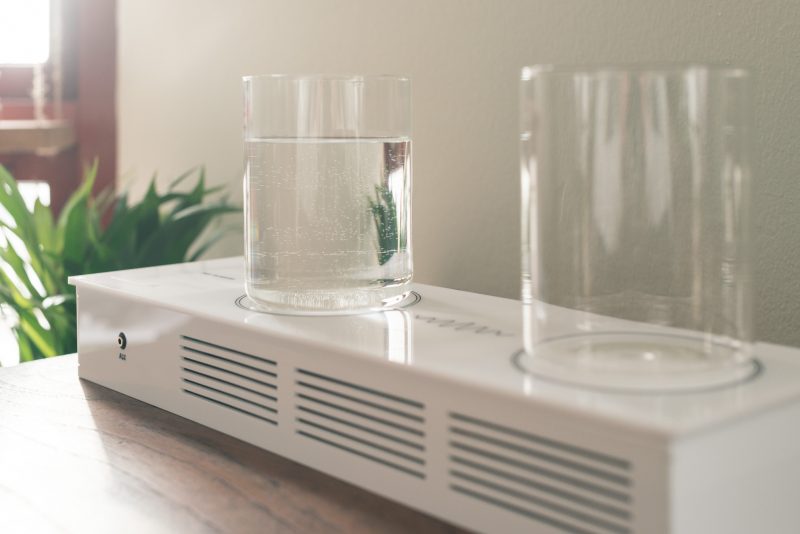When was the last time you poured water onto your radio to turn it on?
Designed collaboratively by [Tore Knudsen], [Simone Okholm Hansen] and [Victor Permild], Pour Reception seeks to challenge what constitutes an interface, and how elements of play can create a new experience for a relatively everyday object.
Lacking buttons or knobs of any kind, Pour Reception appears an inert acrylic box with two glasses resting on top. A detachable instruction card cues the need for water, and pouring some into the glasses wakes the radio.
Inside, two aluminium plates — acting as capacitive touch sensors — are connected to an Arduino using the Tact library from NANDSudio. Wekinator — a machine learning tool — enabled [Knudsen] to program various actions to control the radio. Pouring water between the glasses changes stations, rotating and tweaking the glass’ positions adjusts audio quality, and placing a finger in the glass mutes it temporarily.
It’s a great concept for a more engaging piece of tech, if perhaps a little unnerving to be pouring water around household electronics. Best take preventative measures before applying this idea elsewhere.
















i’m highly skeptical that this is radio since there’s too much music and not enough mind-numbing chatter/interviews/talk-shows/commercials when tuning.. (fm radio here in belgium has been unbearable for years)
Similar to what bothers me here in the USA, a lot of FM air time in small markets (rural areas and small towns)
airs local sporting events. If they are just going to air some sportscaster filling every bit of air time with chatter, move it to the AM affiliate!
I wonder if a low-fi version of this (mono, AM, fully analog) could be made using the water level to tune the radio by making it a variable capacitor (either directly or by the weight of the glass operating a scale that then turned the fins of an old-school tuning cap)?
If so, what would be an analogous volume control? (Salt water bypassing a variable number of resistors maybe? It would be extra cool if it worked with normal potable drinking water like this one does.
With liquid batteries and the such, It’d be cool to see a radio where all of the passive components were jars of liquids, tuned by diffrent volumes!
For volume, force sensitive resistors could be used.
In reverse, for as we all know, the more alcohol one consumes the deafer one becomes. That is why when you join a party late, everyone appears to be shouting!
B^)
I’ve heard of radios that “drift” off frequency as the oscillator warms up, and portables that get quieter as the batteries go flat.
Never thought I’d hear of one where performance is impacted by evaporation.
gimmicky nonsense. sorry.
Meh, think of it like a concept car or a catwalk outfit. Experimental, thought-provoking, even groundbreaking…and desperately, desperately impractical.
I’m fine with the creators of this not breaking it and putting it in the ground. As long as they don’t expand their horizons and decide to “improve” the user interface of, say, a car.
Now I kind of want to make one where instead of binary capacitive touch sensors, there’s a weight sensor so that water volume can be used to tune the radio. I wonder if they tried that and had to scrap it because it seems obvious.
I should’ve mentioned I do think this is a really cool project that is very elegantly presented.
I was hoping with a name like Pour Reception that they were using a column of falling water as an antenna.
Mercury would be better (:
Use a set of scales. Weight of water is commands in hex
And when enough algae has built up in the cup, you won’t even need to pour in water to turn it on!
Now how about making functional copies of the instruments the band used in the “Space Rockers” episode of Buck Rogers in the 25th Century?